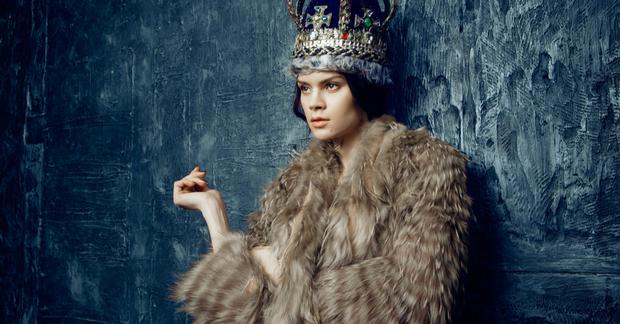How Archetypes Transform Personality
It is easy to use and understand the Pearson-Marr Archetype Indicator® instrument as a personality assessment. This is not necessarily wrong, after all, the PMAI® archetypes are characters with specific traits, attitudes, and attributes that we can identify in our personalities. But to use the PMAI system to only describe your personality greatly limits the insights archetypes can bring to you and your life.
Personality systems typically measure discrete qualities in people, whether these are traits like agreeableness and openness1, preferences for solitude, logical analysis, or relationships2, or motivations such as security, novelty, or harmony3. As stated above, the PMAI archetypes do possess specific traits, preferences, and motivations located in our personalities and makes an insightful contribution to our identity in this way.
The features of personality are life-long; they may change through maturation—say, trait assertiveness develops from brash impulsiveness into more thoughtful initiative—but being assertive is always a personality description. Taking the example of assertiveness, we can see that the Warrior archetype embodies this trait, and always does, even as the character develops over time.
But there is far more involved in the PMAI archetype system that sets it apart from personality. The archetypal characters are symbolic of a universal and eternal human story being told over and over through time and culture. The Ruler archetype not only possesses an authoritative, confident personality, but represents the significant relationships to and narratives that surround the role of authority in our lives and in society. To have Ruler in the top and active section of your Archetype Profile means you likely exhibit Ruler qualities such as being decisive and working to establish order. An active Ruler archetype also indicates that you are currently involved in a Ruler narrative in your life; that is, it asks you, how are you relating to power and authority? What issues or circumstances currently in your life are asking you, even pushing you to take authority?
Analyzing ourselves, our behaviors, and our situations through our personality provides limited insight because personality is bounded by definite and discrete qualities. Once you have identified your significant attributes, personality does not lead you any further in your growth. Development of our personalities comes from situation, circumstance, and especially, the stories we tell and live as our lives unfold. The stories that transform us are archetypal narratives captured in the PMAI system.
Let me tell you a story of a colleague whose experience demonstrates the role of archetypes in the transformation of our personality. This colleague has preferences in the Myers-Briggs® type system for Extraversion, Intuition, Feeling, and Judging (ENFJ). People with the preferences of ENFJ are characteristically concerned with and are outgoing in their pursuit of harmony in relationships; my colleague certainly exhibits this motivation. When she recently took the PMAI instrument, Revolutionary appeared at the top of her Archetype Profile and a lightbulb went off for her! She explained that in recent times she had become more assertive with opinions and positions that were controversial or tended towards disharmony rather than her favored harmony. This was making her uncomfortable and even her children asked, Mom, are you okay? because the behavior was unusual for her.
When she saw Revolutionary at the top of her Profile she immediately and intuitively understood her behavior as being driven by the motivation to disrupt the status quo from the Revolutionary archetypal narrative currently moving through her life. And we can connect this to her Myers-Briggs type, ENFJ, as well. While it is true that ENFJ will always be sensitive to and desire harmony in relationships, it is also true that ENFJ (like other types with preferences for Feeling) values authentic relationships, which sometimes means piercing the social veneer and telling it like it is. In my colleague’s growth, it appears her life, through the Revolutionary archetype, was asking her, what situations are you no longer in harmony with? Where are you living the status quo inauthentically?
Going back to the example of the Ruler narrative being in an active position of the Archetype Profile, this position will be more or less comfortable for different personality types. For instance, a person with preferences for Extraversion, Sensing, Thinking, and Judging (ESTJ) is typically quite comfortable with an active Ruler, but a person with preferences for Introversion, Sensing, Feeling, and Perceiving (ISFP) is likely to experience more discomfort with an active Ruler. In these cases, the Ruler archetypal narrative will ask different questions of each person, questions that, like with my ENFJ colleague, will uncover qualities and potential hidden in the personality and brought out by the archetypes.
I encourage you to look at the Archetype Profile in your PMAI report and think about how each of the archetypal characters in your Profile are playing out archetypal narratives that are active in your life (high), latent but potential in your life (mid-range) and pointing to a blind spot in your life (low). If you know your Myers-Briggs personality type your PMAI archetypes can now bring even more information to you, not only to highlight aspects of your personality, but to point to hidden potential within you.
1. Traits in the Big Five system
2. Preferences in the Myers-Briggs system for Introversion, Thinking, and Feeling, respectively
3. Motivations in the Enneagram system for types Six, Seven, and Nine, respectively















_thumb.png)
_thumb.png)
_thumb.png)



